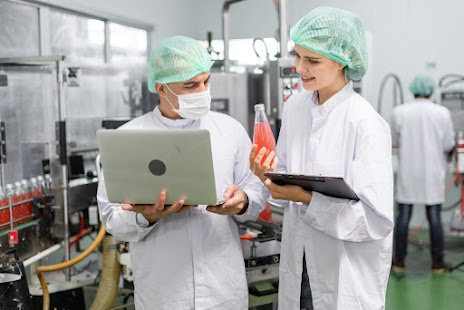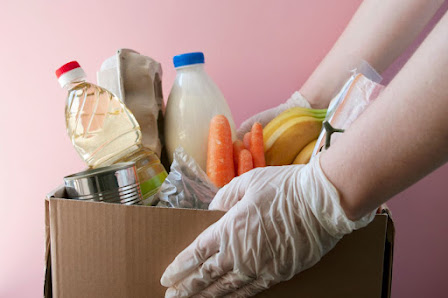Imagine a technology that not only tracks every step of your food production process but also identifies potential risks and hazards in real-time, allowing you to take proactive measures before they escalate. This is precisely what makes this trending food safety management software so compelling – it offers a proactive approach to managing food safety rather than merely reacting to issues as they arise. In this blog, we will delve into how this innovative software can positively impact your business's operations, enhance consumer trust, and ultimately ensure that your food is indeed safe.
Understanding the Importance of Food Safety
Food safety is a crucial aspect of the modern food industry, with significant implications for public health and consumer confidence. It's not just about avoiding bacteria or illness - it's also about maintaining the nutritional quality of our food and preserving its flavors. By understanding the importance of food safety, we can better appreciate the efforts that go into ensuring that the products we consume are safe and wholesome.
Furthermore, focusing on food safety management allows us to address potential risks in the supply chain, production processes, and storage conditions. This proactive approach is essential for preventing contamination and upholding high standards in an increasingly globalized market. Ultimately, prioritizing food safety reinforces trust between consumers and producers, laying a foundation for sustainable business practices and healthier communities.
The Challenge of Traditional Food Safety Management
Traditional food safety management poses a significant challenge in today's fast-paced and globalized food industry. With outdated paper-based systems and manual record-keeping, the risk of human error and oversight is high, leading to potential food safety issues. Moreover, the lack of real-time monitoring and data analysis makes it difficult for businesses to quickly identify and address any safety concerns that may arise. This not only puts consumers at risk but also jeopardizes the reputation and bottom line of food businesses.
Additionally, traditional food safety management often struggles to keep up with evolving regulatory requirements and industry best practices. The constantly changing landscape of food safety standards demands a more dynamic and adaptable approach that traditional methods struggle to provide. As a result, many companies find themselves falling behind in compliance efforts and facing challenges in meeting the expectations of regulators and consumers alike. Embracing technological solutions that offer automation, real-time monitoring, and data-driven insights is crucial for overcoming these challenges in modern food safety management.
Introducing Trending Food Safety Management Software
Food safety management is a critical aspect of the food industry, and with the rise of technology, new software solutions are emerging to revolutionize how businesses approach this essential task. The introduction of trending food safety management software brings a host of benefits, including more efficient tracking of processes, real-time monitoring of compliance, and streamlined communication among teams. This software not only ensures that all regulations are met but also helps companies stay ahead in an increasingly competitive market by enhancing their reputation for producing safe and high-quality products.
One key feature of this innovative software is its ability to automate routine tasks such as temperature monitoring, sanitation checks, and inventory management. By reducing manual labor and human error, it enables food businesses to maintain consistency in their safety protocols while saving time and resources. Moreover, the data analytics capabilities of this software provide valuable insights into areas for improvement and help identify potential risks before they escalate into larger issues. Overall, implementing trending food safety management software is not only a proactive step toward ensuring consumer safety but also a strategic move to optimize operational efficiency in the fast-paced world of food production.
How the Software Improves Food Safety
With the increasing complexity of food supply chains, ensuring food safety has become more challenging than ever before. The introduction of advanced software for food safety management has revolutionized the industry by providing real-time monitoring and traceability across the entire supply chain. This software enables seamless communication between suppliers, manufacturers, and retailers, facilitating swift responses to potential risks and contamination incidents.
Moreover, the software helps in automating compliance with food safety regulations and standards, reducing human error and enhancing overall efficiency. By streamlining processes such as supplier verification, sanitation management, and quality control, this innovative technology minimizes the likelihood of foodborne illness outbreaks. Ultimately, it empowers businesses to proactively identify and resolve issues before they escalate into costly recalls or tarnish their reputation within the market.
Case Studies and Success Stories
Case studies and success stories serve as powerful testimonies to the effectiveness of food safety management software. One compelling case study involves a small restaurant that struggled with maintaining consistent food safety standards. After implementing the software, the restaurant saw a significant reduction in foodborne illness incidents and an improvement in customer satisfaction. This success story highlights how technology can revolutionize traditional food safety practices, leading to tangible improvements in operational efficiency and customer trust. Another inspiring example is a large-scale catering company that faced complex challenges in managing multiple facilities and ensuring compliance with strict regulations. By leveraging innovative food safety management software, the company achieved streamlined processes, standardized procedures, and ultimately bolstered its reputation as a trusted provider of safe and high-quality culinary offerings.
These case studies underscore the transformative impact that adopting modern food safety management solutions can have on businesses within the food industry. They demonstrate real-world examples of how such software can mitigate risks, enhance productivity, and elevate consumer confidence. By examining these success stories, organizations can gain valuable insights into the practical benefits of incorporating advanced technology into their operations to ensure the highest standards of food safety are consistently upheld.
The Future of Food Safety Management Software
The future of food safety management software is poised to revolutionize the way we ensure the safety and quality of our food supply. With advancements in technology, these software solutions are becoming more sophisticated, leveraging artificial intelligence and machine learning algorithms to detect potential risks and hazards in real-time. This proactive approach not only minimizes the chances of contamination but also saves time and resources by preventing costly recalls.
Furthermore, the integration of blockchain technology within food safety management software is set to bring unprecedented levels of transparency and traceability to the industry. By creating an immutable record of every step in the food supply chain, from farm to table, stakeholders can quickly identify the source of any issues and take swift corrective action. This level of accountability not only instills consumer confidence but also enables regulators to more effectively enforce compliance with food safety standards. As these technologies continue to evolve, it's clear that they will play a pivotal role in shaping a safer and more transparent future for our global food system.
Conclusion: Emphasizing the Impact and Benefits
In conclusion, the impact and benefits of implementing a cutting-edge food safety management software cannot be overstated. The ability to track, monitor, and analyze data in real-time is revolutionizing the way food businesses operate, ensuring safer products for consumers and greater efficiency for producers. By leveraging this technology, businesses can not only improve compliance with food safety regulations but also gain valuable insights into their operations that lead to cost savings and enhanced consumer trust.
Moreover, the impact of this software extends beyond just internal operations. It directly contributes to overarching public health by minimizing the risk of foodborne illnesses and contamination outbreaks. As consumer demand for transparency continues to rise, adopting such innovative solutions showcases a commitment to quality and safety that sets businesses apart in an increasingly competitive industry. Ultimately, investing in advanced food safety management software goes beyond mere regulatory compliance – it’s a strategic move towards sustainable growth and consumer satisfaction in today’s evolving market landscape.








